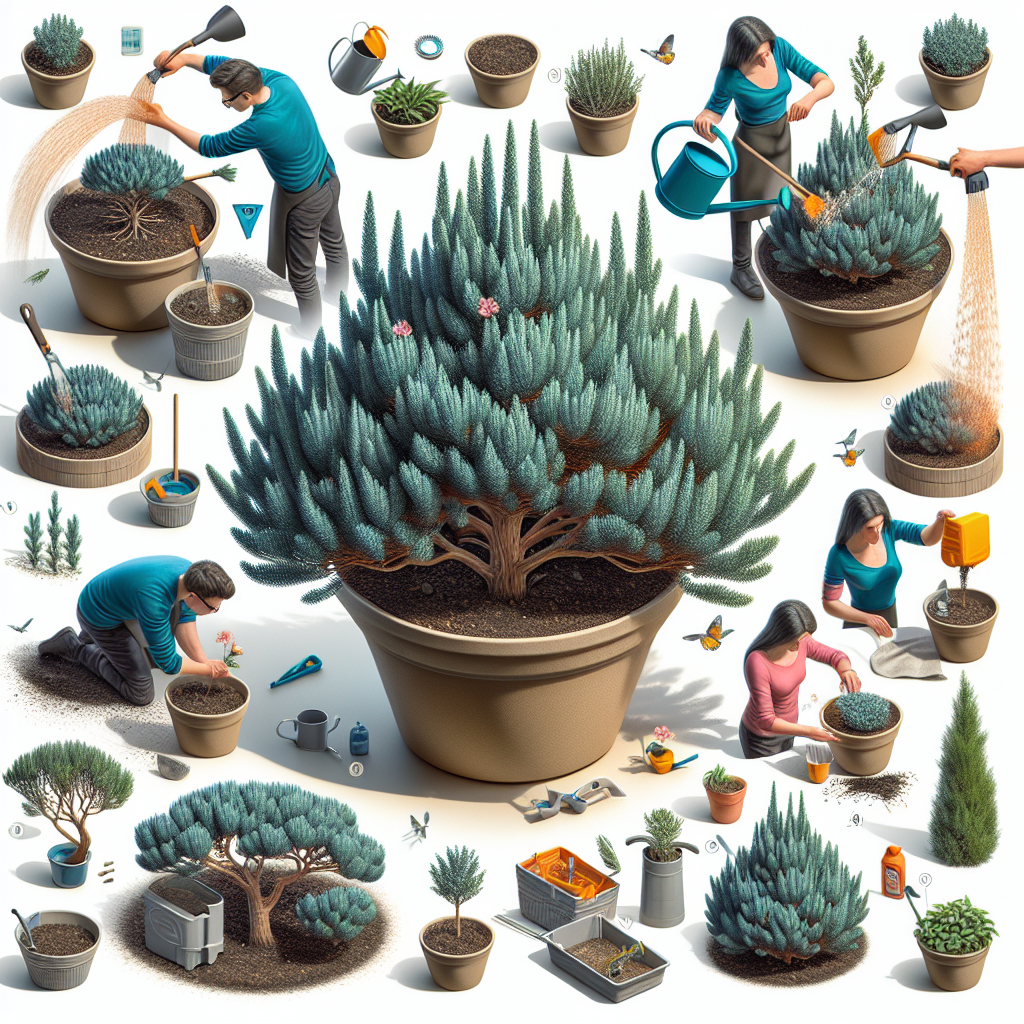Blue Point Juniper is a popular choice for landscaping due to its stunning blue-green foliage and attractive upright form. However, this beautiful plant can also thrive as a potted plant if given the proper care and attention. In this article, we will explore some care tips and tricks to help you successfully grow and maintain a Blue Point Juniper in a pot.
Choosing the Right Pot
When selecting a pot for your Blue Point Juniper, it is important to choose one that is large enough to accommodate the plant’s root system. A pot that is too small can restrict root growth and lead to stunted growth or poor health. It is recommended to choose a pot that is at least 2-3 times larger than the current root ball of the plant.
Additionally, it is important to ensure that the pot has proper drainage holes at the bottom to allow excess water to drain out. Blue Point Junipers prefer well-draining soil, so choosing a pot with good drainage is essential for their health and longevity.
Soil Requirements
Blue Point Junipers prefer well-draining, sandy soil with a slightly acidic pH. When planting your juniper in a pot, it is important to use high-quality potting soil specifically formulated for container plants. Avoid using regular garden soil as it can become compacted and prevent proper drainage.
You can also add some perlite or sand to the soil mix to improve drainage and increase air circulation around the roots. This will help prevent root rot and other water-related issues that can harm your juniper.
Watering
Proper watering is key to keeping your Blue Point Juniper healthy and thriving in a pot. These plants prefer moist but well-drained soil, so it is important not to overwater them. Allow the top inch of soil to dry out before watering again, as junipers are susceptible to root rot if their roots stay constantly wet.
During hot summer months, you may need to water your juniper more frequently, but always be sure not to let water sit in the saucer beneath the pot as this can lead to waterlogging of the roots. Use your finger or a moisture meter to check the soil moisture before watering.
Lighting
Blue Point Junipers require full sun to thrive, so it is important to place your potted plant in an area that receives at least 6-8 hours of direct sunlight each day. If you are growing your juniper indoors, place it near a south-facing window where it can receive ample sunlight.
If you notice that your juniper’s foliage starts turning dull or brownish, it may be an indication that it is not getting enough light. Consider moving your plant closer to a window or placing it outside during warm weather months for optimal sunlight exposure.
Pruning
Regular pruning is essential for maintaining the shape and health of your Blue Point Juniper as a potted plant. Prune back any dead or diseased branches using sharp pruning shears, making clean cuts just above a set of healthy leaves or branches.
You can also prune back any overgrown branches or shape your juniper into a desired form using strategic pruning techniques. Avoid cutting back more than one-third of the total foliage at once, as this can stress the plant and hinder its growth.
Fertilizing
Blue Point Junipers are light feeders and do not require frequent fertilization when grown in pots. You can apply a slow-release balanced fertilizer in early spring when new growth begins, following package instructions for application rates.
Alternatively, you can use a liquid fertilizer diluted by half every 4-6 weeks during the growing season from spring through summer. Always water your juniper thoroughly after fertilizing to prevent salt build-up in the soil which can harm your plant.
Winter Care
In colder climates where temperatures drop below freezing, Blue Point Junipers may need extra protection during winter months when grown in pots. Consider moving your potted plant indoors or into an unheated garage where temperatures remain above freezing.
If you choose to leave your juniper outdoors during winter, wrap the pot with insulating material like burlap or bubble wrap and mulch around the base of the plant with straw or pine needles for added protection against cold temperatures.
Pests and Diseases
While Blue Point Junipers are relatively pest-resistant plants, they may still be susceptible to certain insects like spider mites or scale insects if grown indoors or under stress conditions. Keep an eye out for any signs of pests such as yellowing leaves, webbing on foliage, or sticky residue on branches.
To manage pest infestations on your juniper, gently wash off affected areas with soapy water or treat them with neem oil spray according to package instructions. Avoid using harsh chemical pesticides which can harm beneficial insects like bees and ladybugs which help control pest populations naturally.
Conclusion
Growing Blue Point Junipers as potted plants can be rewarding when given proper care and attention throughout their lifecycle. By following these care tips and tricks outlined above such as choosing the right pot size, providing well-draining soil mixtures; mindful watering practices; adequate sunlight exposure; routine pruning; occasional fertilization; winter protection measures against cold temperatures; monitoring pest infestations; implementing natural solutions when dealing with pests —you can enjoy healthy growth displaying magnificent foliage year-round perennial shrub tree species native climate zones seven through four—USDA hardiness zones seven four respectively!














